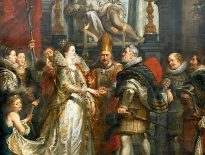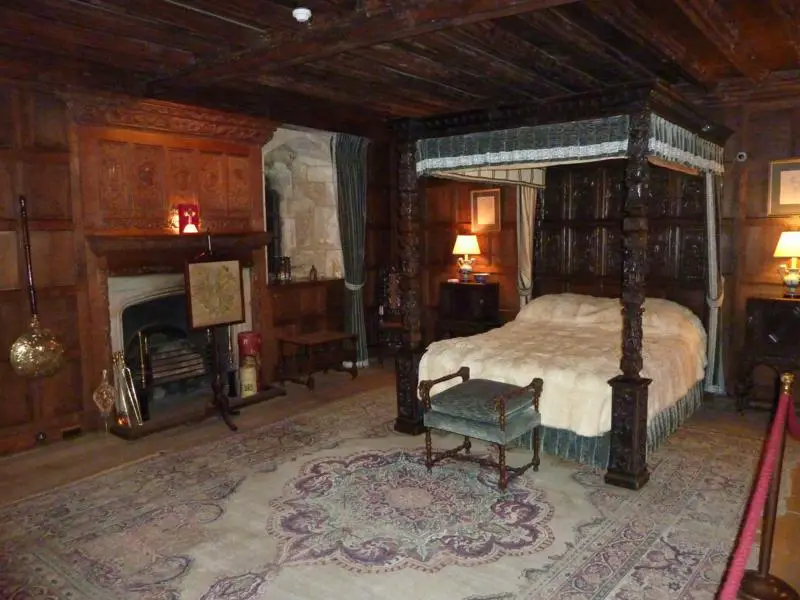On 9th August 1561, while on a visit to Ipswich in Suffolk, Queen Elizabeth I issued injunctions forbidding women to reside in cathedrals and colleges. It was this "on this day" event that made me dig deeper into her injunctions, the reaction to them, and also her religious settlement and "middle way".
I hope you enjoy my Claire Chats video talk on this topic.
You can read the full text of the Act of Uniformity 1559 at http://history.hanover.edu/texts/engref/er80.html.
Notes and Sources
- https://www.historyhit.com/how-elizabeth-i-tried-to-balance-catholic-and-protestant-forces-and-ultimately-failed/
- “The Portable Queen: Elizabeth I and the Politics of Ceremony” by Mary Hill Cole
- “Mary I and the Art of Book Dedications: Royal Women, Power, and Persuasion” by Valerie Schutte
- “The life and acts of Matthew Parker : the first Archbishop of Canterbury, in the reign of Queen Elizabeth” - John Strype, https://archive.org/details/lifeactsofmatthe01stry/page/92
- Bjorklund, Nancy Basler. “‘A Godly Wyfe Is an Helper’: Matthew Parker and the Defense of Clerical Marriage.” The Sixteenth Century Journal, vol. 34, no. 2, 2003, pp. 347–365. JSTOR, www.jstor.org/stable/20061413.



I agree, if Elizabeth wasn’t going to allow certain religious outward signs, candles for example, she should have followed this in her own chapel as well. On the other hand it wasn’t wise to make any changes until legislation had been passed as can be seen by the Bishop elevation of the Host, which legally he could do as the same laws from the Marian Church still existed. Even her Act of Uniformity 1559 was bound to be controversial because the majority of her subjects were still Catholic. It would take another ten or more years for the changes to really be settled.
Regarding Clerical marriage, it is actually correct that before the end of the eleventh century it was indeed normal. Monks were meant to renounce a wife but an ordinary or secular priest, a parish priest in other words could marry. However, it became a great concern that clergy were not able to carry out their duties without distraction and as part of a general reform of Church morality and clerical obligations, the clergy were henceforth forbidden to marry. It might interest you to know that in the Eastern Orthodox Tradition a priest could always marry. The Apostle Paul gave advice on clerical marriage were he both said it was better not to marry as a man can better dedicate himself to God. However, if men can’t control themselves, then they should marry and have the wife as a help mate to them. In other words it was holy for a man to remain unmarried and chastity was encouraged but it was also a good thing to marry. The Early Church, the Celtic and Saxon Church promoted married clergy, but the Frankish Church didn’t. The Norman Church was more highly structured than the English one and married clergy were indeed banned after the conquest. As you can imagine this division of opinion wasn’t good for discipline or unity so after several discussions and a Council, clerical marriage was outlawed. Therefore Archbishop Parker was correct in his analysis and arguments. The problem Elizabeth had was as you said, was a bunch of religious changes which again had left an anomalous situation in England and Wales. Henry Viii had left a mixture of new and old Catholic and various new ideas around on his death, Edward had enforced two Prayer Books and a Protestant settlement, Mary had reversed this and to popular acclaim reconciled England to Rome and also enforced the Catholic Mass and faith, which left Elizabeth inheriting a country with very mixed ideals. Clerical marriage was hated by her father, encouraged by her brother, forbidden by her sister and Elizabeth didn’t really agree with it, but didn’t want to forbid it either. The majority of her clergy probably were not married, although a number of the reformed ones now in power were. No wonder her Archbishop had to scratch his head over how to move forward. Matthew Parker also wrote to Elizabeth because he accepted the position of Archbishop of Canterbury because of his obligation to her mother, Anne Boleyn. He too had to be diplomatic so as not to offend the new Queen. His arguments are very scholarly and balanced and very persuasive. He must have been a clever and brilliant man.
Yes, this was very interesting. And I see, not until a little later (1570 maybe?) when she was excommunicated, she had to make further changes. I find, though, that these injunctions did lean a little more Protestant than Catholic. And I do think it’s ironic, she didn’t want to peek in the windows of her subjects’ souls, so to speak, but she still demanded weekly church attendance (or a fine!). And holy days! Cheesh! Interesting. Michelle t
I think in the Tudor era, religion was of great importance in the vast majority of the people’s lives and they believed more whole-heartedly in the tenets of their religion. Government and religion were intertwined for centuries in Europe. It was therefore probably unheard of, at least in those days, to separate church and state.
Over 200 years later, the US Founding Fathers separated Church and State in the Constitution because there were productive, good people of various religions and sects, especially from Rhode Island down, who had come to the colonies specifically for religious freedom (eg Quakers). I also believe that the writers of the Constitution were more secularly oriented than people of the Tudor Era. It had more to do with maintaining peace and therefore promoting commerce.